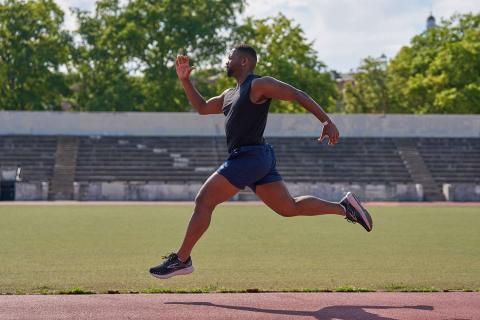
Running is a versatile and accessible sport, offering a range of styles and activities that cater to different fitness goals, preferences, and abilities. Whether you're a beginner looking to improve your fitness or an experienced runner aiming for a new challenge, understanding the different types of running can help you tailor your training and get the most out of your running experience.
In this article, we’ll break down the most popular types of running, highlighting their benefits, and helping you decide which style suits your needs.
What it is: Sprinting is the shortest and fastest form of running. It typically involves running at maximum effort over a short distance, usually between 60 meters to 400 meters.
Why it’s great:
Who it's for: Athletes, sprinters, or anyone looking to build speed and power. Sprinting is intense, so it's best suited for individuals with a solid fitness base.

What it is: Long-distance running refers to running over extended periods of time or long distances, typically 5K, 10K, half marathons, marathons, or even ultra-marathons (distances longer than a marathon).
Why it’s great:
Who it's for: Beginners looking to build stamina, seasoned runners preparing for races, or anyone with long-term fitness goals focused on endurance.

What it is: Interval running involves alternating between high-intensity sprints and periods of rest or low-intensity jogging. This method is often used in High-Intensity Interval Training (HIIT) workouts.
Why it’s great:
Who it's for: People looking for a time-efficient and intense workout, those training for speed or general fitness, and athletes looking to improve both strength and endurance.

What it is: Trail running is running on natural, uneven terrain such as dirt paths, hills, mountains, or forests. The landscape can vary from relatively flat trails to technical, rocky paths.
Why it’s great:
Who it's for: Runners who enjoy nature, seek variety in their workouts, and want to challenge themselves with different terrains. It's suitable for runners who enjoy adventure and want to step off the beaten path.

What it is: "Fartlek" is a Swedish term that means "speed play." Fartlek running is a type of interval training that involves varying your speed and intensity throughout your run. Unlike traditional interval training, which typically has structured work-to-rest ratios, fartlek running is more unstructured and spontaneous.
Why it’s great:
Who it's for: Runners who want to improve speed and endurance without the rigidity of interval training. It’s also great for beginners who want to add some variety to their runs.

What it is: Hill running involves running up and down hills, either as part of a trail or road workout. Running uphill is challenging, while running downhill tests your speed and control.
Why it’s great:
Who it's for: Runners looking to build strength, increase power, or prepare for races with hilly terrain. Hill running is suitable for intermediate to advanced runners but can also be adapted for beginners with gradual incline training.

What it is: Recovery running is a light, easy-paced run that helps you recover from more intense training sessions. The focus is on running at a comfortable pace that allows your body to heal and replenish without straining it.
Why it’s great:
Who it's for: Any runner who wants to prevent overtraining and accelerate recovery. It’s ideal for all levels of runners looking to add low-intensity runs into their training regimen.

With so many different types of running, there's something for everyone—whether you're a beginner just starting out, a seasoned athlete looking to push your limits, or someone simply looking for a fun way to get active. Each type of running offers unique benefits, so the key is to choose the one that aligns with your fitness goals, interests, and current level.
To get the most out of your running experience, don't be afraid to mix and match different types of running. Combining long-distance runs with interval training, or incorporating hill runs and recovery runs into your routine, can keep your workouts fresh, challenging, and effective.
So, put on your running shoes, choose a style, and hit the road (or trail) — your running journey awaits!
Discover More Content





